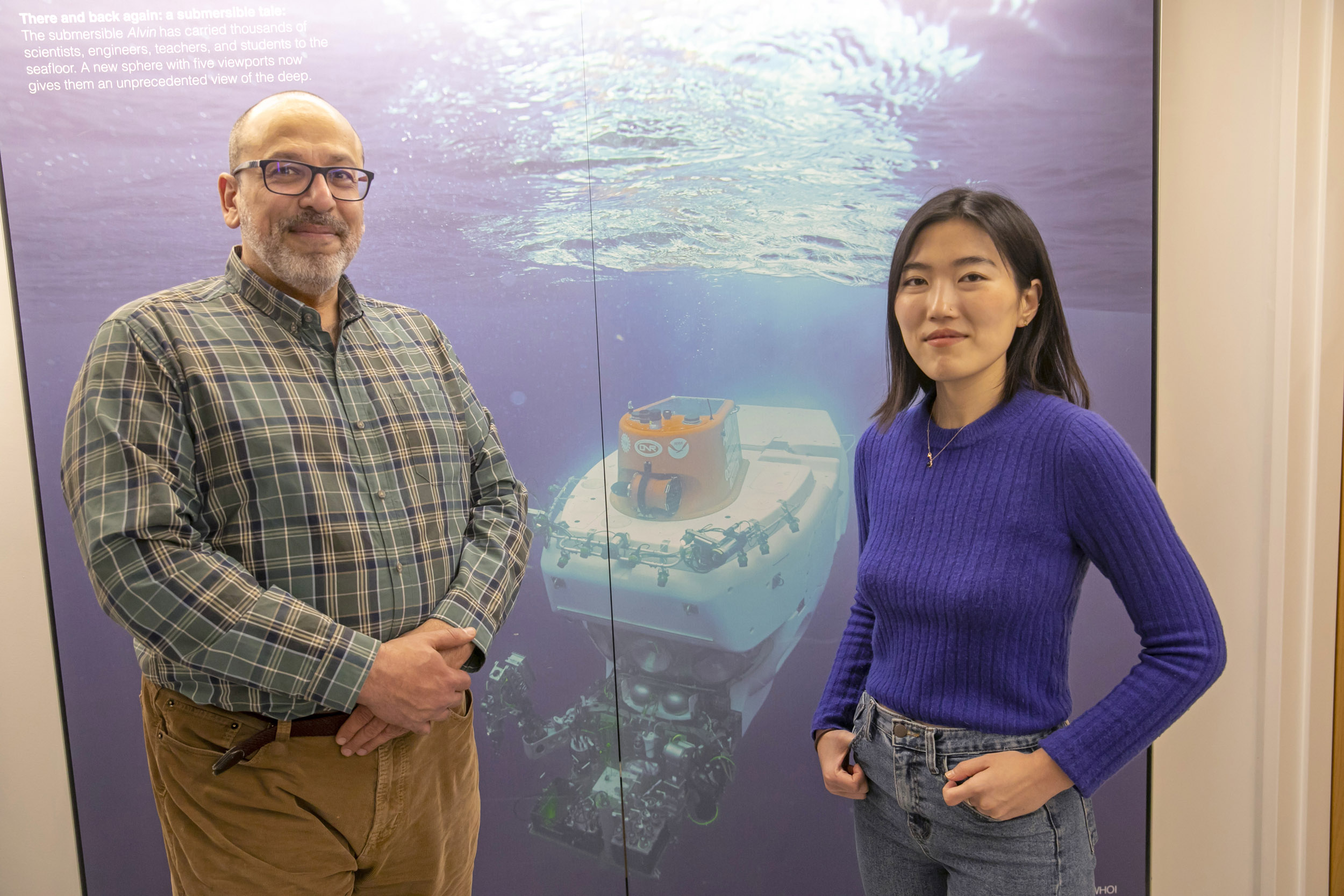
Peter Girguis and Yunha Hwang made their discovery after collecting deep-sea bacteria and archaea samples in the Guaymas Basin, Mexico.
Jon Chase/Harvard Staff Photographer
2 very different microbes immune to the same viruses? Scientists were puzzled.
Genomic analysis of deep-sea samples suggests host diversity far greater than previously thought
In a study published in Nature Microbiology, Harvard researchers found evidence that viruses infecting microbes in the deep sea interact with a far more diverse set of hosts than previously thought. The findings could aid in better understanding of viruses and in engineering new therapies.
The discovery followed a 2021 expedition in the Guaymas Basin, Mexico, where lead author Ph.D. candidate Yunha Hwang and senior author Professor Peter Girguis, both of the Department of Organismic and Evolutionary Biology, had collected bacteria and archaea samples from deep-sea hydrothermal vent microbial mats.
While both are microbial, bacteria and archaea are about as different from each other as bacteria are from people. So Hwang and Girguis were surprised to find that they carry immunity against the same viruses. At hydrothermal vents, where the samples were taken, the two microorganisms form aggregates that can harness energy from methane, a symbiotic relationship necessary for survival. Could immunity have been transferred through these encounters, asked the researchers?
“We were baffled when we saw the results,” said Hwang, “because whether they’re symbiotic or not, infection machinery is thought to be very complicated and host-specific. If archaea and bacteria are so different, how can one virus infect both?”
That question led the researchers to think about all the ways in which viruses can interact with microbes beyond infection.
“It’s very unlikely the same virus can infect both bacteria and archaea,” Hwang said. “Instead, we propose that either one partner gained and retained immunity after a noninfectious encounter with a virus, and/or immunity was horizontally transferred between symbiotic partners.”
The researchers sequenced DNA from the samples using CRISPR spacers, which encode the microbe’s immunological memory, confirming results with a newer technique called Hi-C (High Throughput Chromosome Conformation Capture) sequencing. “The CRISPR spacer analysis and Hi-C data showed a striking pattern that viruses genomically interact with very distantly related sets of microbes, particularly those that are in symbiosis with each other,” said Hwang. “[This] means there is an advantage in symbiotic partners collaborating that exists also in their immunity. We have seen this within populations of bacteria, but we haven’t seen it across distantly related species.
“This is quite a poignant finding in that it reveals how interconnected the natural environment is.”
The findings have led Hwang and Girguis to propose different models of host-virus interactions with ecological and evolutionary implications that go beyond infection. Viral interactions with microbes that are not the virus’s primary hosts may actually be prevalent in nature, particularly where microbes exist in a symbiotic relationship.
“Yunha is very clever to have designed an experiment that takes advantage of vent microbial mats to better understand the role of viruses in habitats where microbial densities are crazy high,” said Girguis. “She’s also very thoughtful in looking for patterns in the genomes of both archaea and bacteria. The CRISPR spacer and Hi-C data showed us that the bacteria interacted, in some way or another, with the same virus as the archaea, which is totally wild.”
The polyvalent nature of host-virus interactions in natural environments, and the diverse modes of interaction beyond infection, present important considerations as researchers work toward using viruses for biotechnological and medical applications, such as virus therapy in natural environments like the gut.
“These host-virus interactions in natural environments show immunity can cross large phylogenetic distances, resulting in inter-populations that can build greater viral resilience across populations,” said Hwang.





